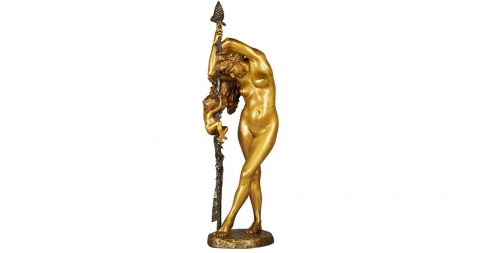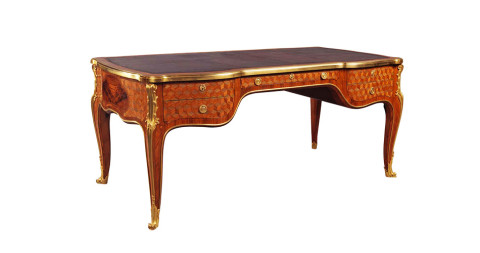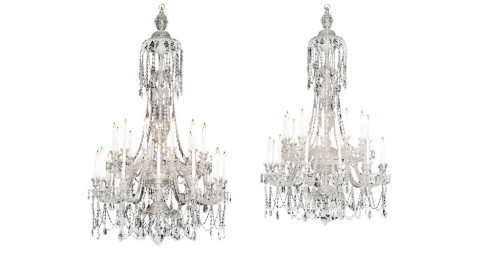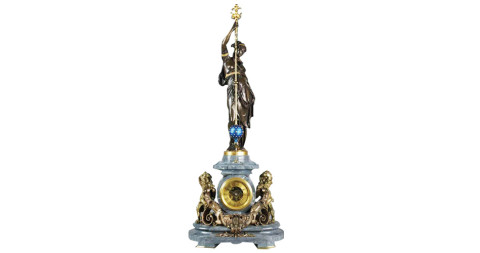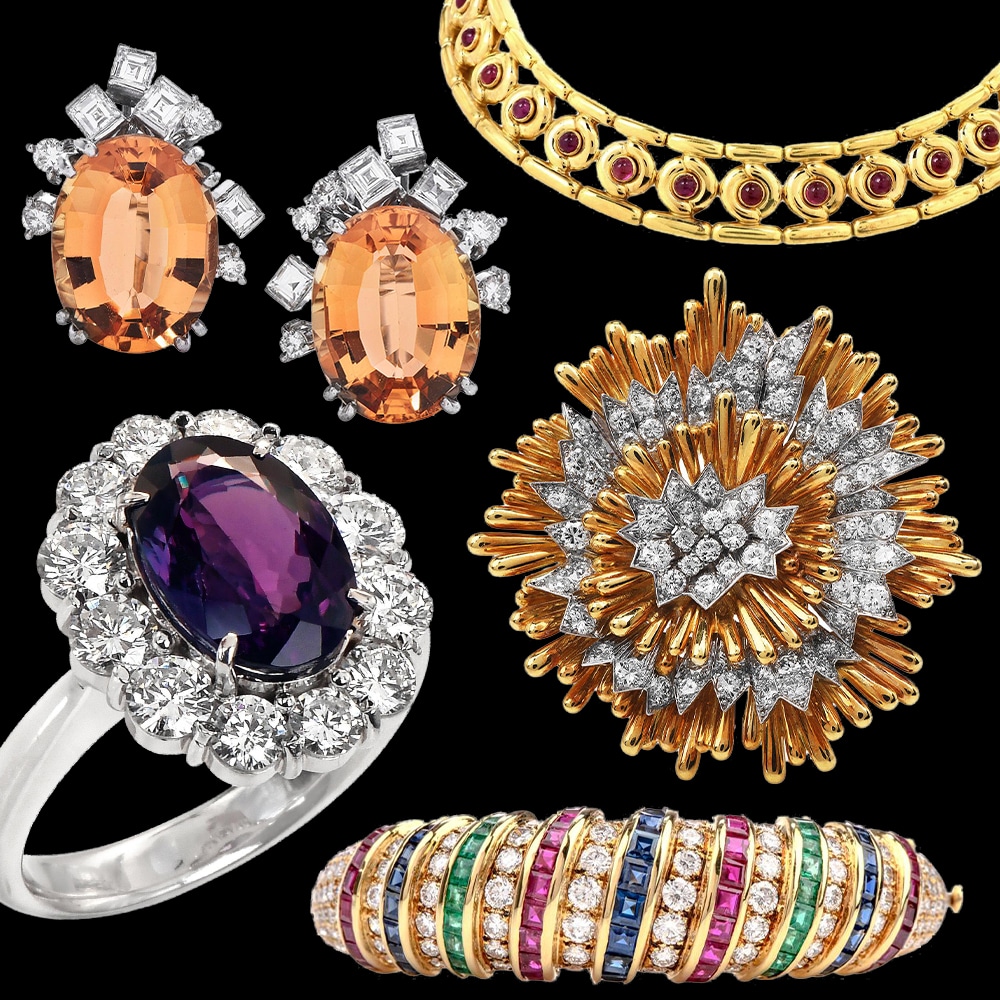
September 24, 2014One of London’s top dealers in 18th- and 19th-century European and Continental furniture and decorative objects, Adrian Alan has been selling antiques since the 1960s. Top: The shop is a mass of treasures.
To enter Adrian Alan’s Mayfair gallery is to gain access to a carefully curated treasure house that boasts ornate works by a roll call of the greatest names in the decorative arts: François Linke, Sévres, Aubusson, Zwiener, Cordier, Millet, all working at the peak of their powers.
Synonymous for the last 50 years with the finest examples of 19th-century European furniture — desks, clocks, tables and chandeliers distinguished by ornate carving, patinated bronze detailing, inlaid exotic wood and gilt decoration — Alan began in the antiques trade when he was just 17. Before leaving for university, he was driving through his hometown of Brighton with his mother, Muriel, when she spotted a decorative gilt jardinière. It was offered in a group of four (priced at £12) but she wanted just one, so Alan was left with the remaining three, which he sold off one at a time to successive dealers — each at an increasing profit.
During his three years at King’s College London, Alan established a small shop in Brighton, working with his mother and acquiring works whenever he could. “When I was a student, I was going to have to earn a little extra money in order to survive,” he explains. “So I started to buy and sell a few bits and had a fledgling business. I was probably making as much in a few hours a day as I would working all day elsewhere.”
After graduating with a degree in physics, Alan devoted himself to the Brighton shop full time, while exploring first Britain and then the European continent to find pieces and learn the trade. His dedication to attending as many auctions as possible even extended to learning how to pilot a plane, which allowed him to travel further, faster. Having previously sold antiques across categories and periods, Alan gradually established a specialization in decorative Continental and European furniture, a field that had not yet been fully developed in the United Kingdom.

Adrian Alan’s eponymous shop is located on South Audley Street in London’s prestigious West End.

One in a pair of George III–style circa-1880 giltwood mirrors is placed above a circa-1870 Louis XVI–style commode with Chinese lacquer panels dating from 1760. An Austrian neo-baroque carved mahogany bed, ca. 1890, is visible through the doorway.
I never appreciated how good my timing was,” says Alan, who moved premises first within Brighton and then to London before settling in 1992 on South Audley Street, in the city’s prestigious West End. “It was the 1960s and the beginning of the boom in the antiques business. The world was opening up and people were beginning to travel more, and there was a need to satisfy a growing appetite for antiques. We were perfectly placed to be involved in this rapidly expanding market.”
If the market was rapidly changing then, so, too, is it today. In the past, London dealers may have worked mostly with wealthy Britons furnishing their homes or ardent collectors who sought only specific examples from a certain maker. Now, buyers come from the Middle East, Russia, Eastern Europe, Hong Kong and, increasingly, mainland China. “We are looking to China as the future in our field,” Alan admits. “There is a lot of interest and, while they may not yet know a huge amount about European furniture, Chinese collectors do seem to know about Linke and the high-quality French makers we sell.”
Extending over two floors today, Alan’s South Audley Street gallery is spacious, punctuated with carefully placed works: a Eugène Farcot conical pendulum clock from 1870 featuring a classical bronze sculpture by Albert-Ernest Carrier-Belleuse with an ingenious mechanism; a center table by Maison Millet with a circular amethyst top; a François Linke bureau plat inlaid with intricate marquetry. Alan’s 24 years in Mayfair have underlined for him the importance of a good location. As with new markets, however, the gallery’s online presence — Twitter, Facebook, Instagram and, naturally, 1stdibs — has an increasing importance. “Technology has changed the business,” he says. “You can reach people you would never have before, and we sell some things online, but it also means there is an awful lot of competition.”

A guéridon with pietre dure style inlay by Georges-Alphonse-Bonifacio Monbro, ca. 1860, sits in front of a pair of Louis XV–style giltwood canapés upholstered in Aubusson tapestry, ca. 1890, while a 24-light chandelier by Perry & Co., ca. 1870, hangs overhead.
Alan is now happily conceding at least some ground to the next generation, as his daughters, Louisa and Hayley, take an active role in the gallery. “There was no plan when I started, and I never thought my daughters would go into it,” he says. “We’ve developed as they have brought different skills to the business.” Louisa pursued a career in advertising and marketing before joining the family firm, while Hayley previously worked as an accountant in the city. With this new talent fortifying Alan’s own experience, there is little doubt the business will continue to adapt and thrive for another 50 years — and beyond.
TALKING POINTS
Adrian Alan shares his thoughts on a few choice pieces.

